When non-birders think of sparrows they think of the common House Sparrow, the bird
that says, “Cheep, cheep” in our hedges and is abundant in built-up areas. But House
Sparrows are not true sparrows, were introduced here from Europe and are in fact related
to the North African weaver finches! Two true sparrow species, native to North America,
ARE found in our valley, however. They both migrate south for our winters and return in
spring to breed here. These are the Savannah Sparrow and the Vesper Sparrow and you can
see them easily if you know where to look.
Savannah Sparrow, Beaver Lake Road, (two photos)
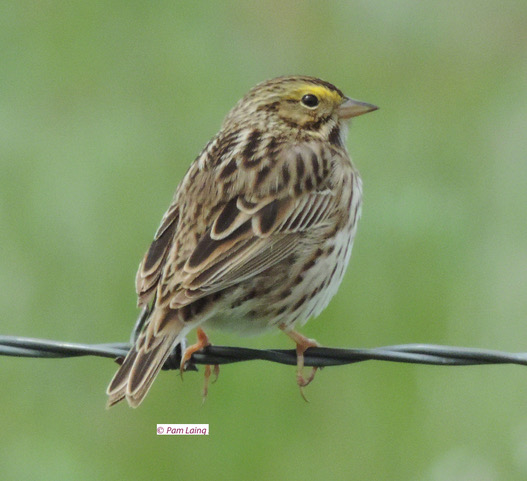
Savannah Sparrows, as the name implies, are grassland birds. They favour lush meadows,
parks, and hillside grasslands. I often see them perched on fences round cattle fields or in
the nearby trees at this time of year. I also see them in valley-bottom parks especially near
water. They are neat, cleanly marked birds, about 5.5”/~14-15cm in size. The most visible
field mark is a yellow patch between the bird’s eye and beak. The breast is finely streaked
and the belly white. Their range is Canada-wide in summer, even the far north, and they
winter across the southern US and further south.
Savannah Sparrow in a tree near a wet field.
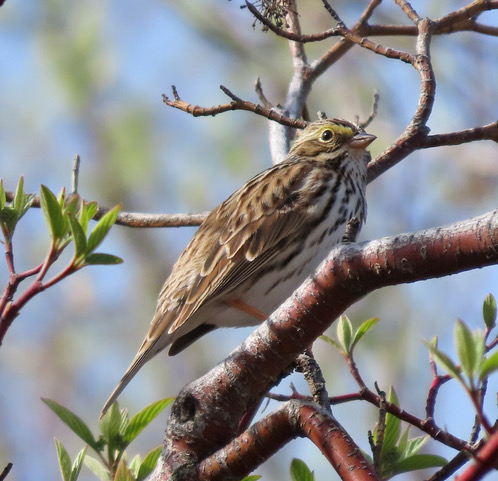
Their concealed cup-shaped nests are in depressions on the ground, protected by
overhanging grasses and they typically raise 1 – 2 broods between June and August. They
forage on the ground for insects, but in summer also eat seeds. Their songs consist of high,
fine buzzes, each on a lower pitch than the preceding one, and quite musical and pleasant
to hear.
Savannah Sparrow singing in a Kelowna city park (behind the Capital News Centre)
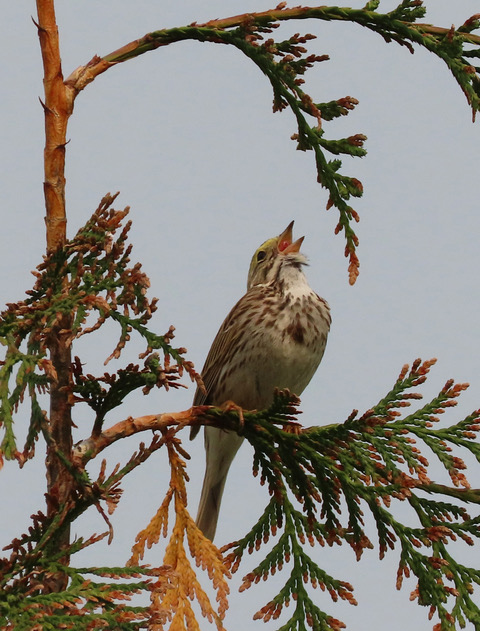
Vesper Sparrows, apparently, were named for the evening prayers known as vespers sung
in Catholic and Eastern Orthodox churches because their pleasant songs were considered
sweetest in the evening. Whether that’s the case or not, they can be recognized by their
pleasant singing. Beginning with two short notes, repeated, then slow trills accelerating
and descending, I have heard it described as sounding like, “Here, Here, There, There,
Everybody Run Downhill!”
Vesper Sparrow, Beaver Lake Road (two photos)
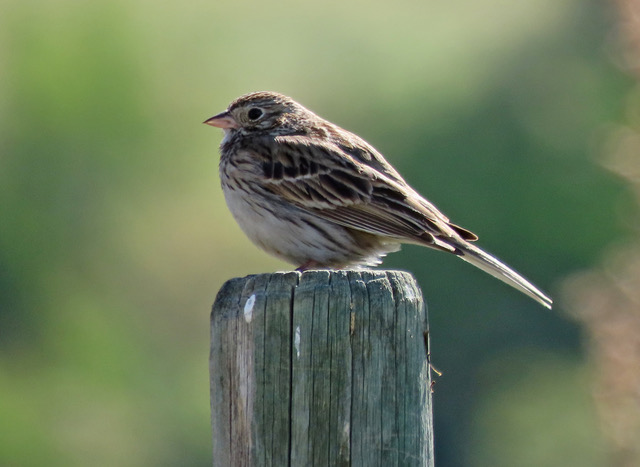
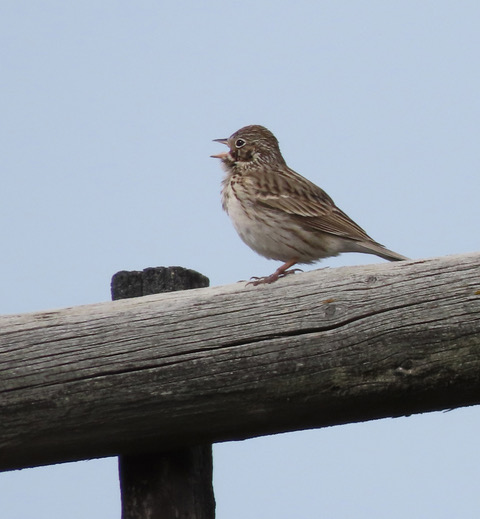
These are easily recognized little birds by sight too, about 6.25”/~16cm, slightly larger
than Savannah Sparrows. Vesper Sparrows prefer slightly drier grassland habitat, so are
usually found on our upland grassy slopes. Beaver Lake Road or McCulloch Road where it
passes through the grasslands are both excellent places to see them. Look along the fence
lines or on the top of bushes. They need areas with bare ground to breed, where they make
their cup nests leaning against grasses, bushes or rocks. They raise one brood each summer
between April and August.
Vesper Sparrow, upper McCulloch Road
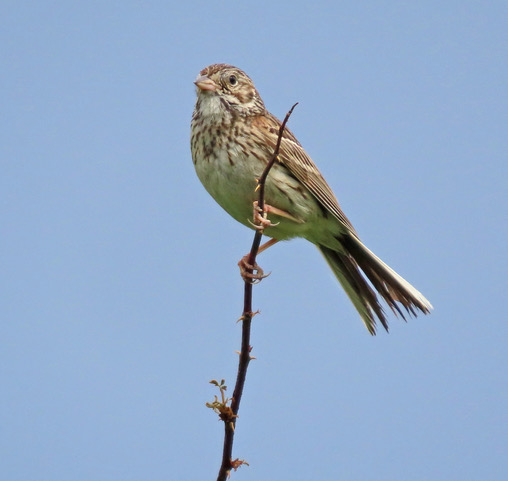
Ranging across southern parts of Canada and the northern US in summer, they winter in
Mexico and the extreme southern US. They have clean white outer tail feathers, a distinct
white eye ring, a cream-coloured belly and finely streaked breast. The small beak is pink
and there is a distinct facial pattern. I often think they look a bit ‘vacant’, which is probably
a disservice to them but helps me identify them!
Vacant or not, Vesper and Savannah Sparrows are a sure sign of spring in our valley. They
will be active and fairly visible throughout the warmer months, so see if you can find some,
then look and listen carefully so that you can tell the difference. Sparrows may not be the
prettiest of our summer visitors but they can be among the most musical. I always look
forward to their return.
Pam Laing
Okanagan birder







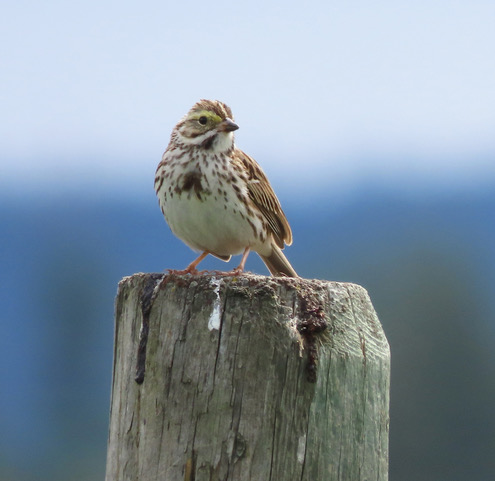
0 Comments